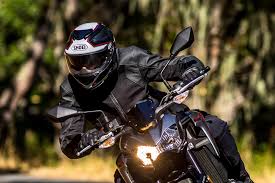Blog
2021-06-24
When you are driving a motorcycle, wearing a motorcycle helmet can protect your head, especially in times of danger and accidents. Therefore, choosing a suitable motorcycle helmet is very important. We provide some help and selection techniques to help you find a suitable safety helmet. How to choose a motorcycle helmet?
First, this is one of the most basic mistakes beginners often make: buying a helmet that doesn't fit. If you buy the wrong helmet, the helmet can slip off during the ride, and it can have effects ranging from mild discomfort to actual danger.
When buying a helmet for the first time, the best advice is to make sure you can try it on in a physical store, where you can determine your measurements and how well the helmet fits on its own. If there is no physical store nearby, you can measure your head.
To measure the head, start above the eyebrows and then move around the head. Cross-reference the measurements with the helmet size table. A helmet that is too loose will walk around or fail to fit completely on your head. A properly sized helmet will be a bit tight and provide even pressure around your head without leaving you with an uncomfortable area. It shouldn't move when you shake your head.
When trying, the chin strap should be tight enough so that only two fingers can be inserted between the strap and the base of the chin. You should not feel any gaps around your head and the helmet should not be too tight to be comfortable.
You should wear the helmet for a few minutes to feel it, and you should try to move it with your hands while wearing it. When you move the helmet, your cheeks should move, but the helmet should not rotate or move in any direction without moving the head. Testing the fit of the chin strap means you should look down at the chest and try to push up the back of the helmet. If you can push it up a lot, the helmet is not the best fit for you.
We have to choose a riding style that suits us and reflects the practicality of the motorcycle helmet. You need to be clear about what kind of rides you want to do. For example, if you think you'll be riding in the city, you might want something to lift your chin, an integrated Bluetooth system, or something like a pull-down sun visor.
Again, on the track you'd want the opposite, so a hard carbon fiber or fiberglass shell, aerodynamic design, and lots of ventilation. Basically, just make sure you're thinking about the helmet designed for the ride you're planning, not just the look.

The helmet casing, the sun visor, the cheek pad, the air vents, and the earplugs are all crucial.
Helmet shells are usually made of Kevlar, carbon fiber, polycarbonate, molded plastic, or a combination of these materials, and their main function is to protect your head in the event of impact or wear, and to prevent penetration by hard objects.
Antifogging is very important for sun visors, and while many helmets are fogging treated and usually work, the best option is to always use an antifogging pin to lock the visor and inserts. This is the maximum double glazing effect on your visor and it will prevent any potential fogging.
The emergency release of cheek pads is a very important feature. These are usually red ribbons or labels found on the bottom of the cheek pads. These tags allow first responders to quickly remove the helmet from your head without putting pressure on your head.
Vents on the helmet are designed to keep the rider's head cool and help evaporate as much as possible from the seat. Ventilation is more common on full-face helmets but may vary depending on the type of manufacturer. Most vents can be optionally opened and closed in different weather conditions. You might want it to be completely on in the warm months, completely off in the cool months, and somewhere in between for the rest of the riding season. They are adjustable, which makes them a good choice for every rider's comfort.
Earplugs are also important if you're planning a long road trip on the highway. They can help prevent hearing damage caused by the sound of your bike and the wind on your helmet.
Request a Quote
Request a Quote